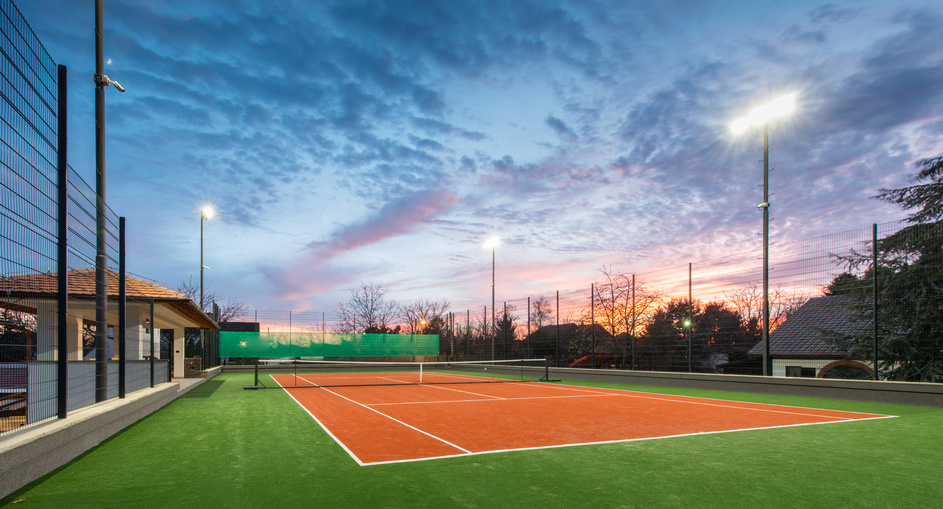
In any sport, safety comes first. Though tennis is a non-contact sport, improper technique and faulty equipment can both cause serious injuries.
Whether you coach children or play tennis yourself, having the proper tools available on the court can help protect the safety of every athlete. To prevent injuries from sunburn to concussion, consider installing the following equipment to maintain a safer tennis court:
Tennis Court Benches
Tennis court benches provide a much-needed area for athletes to sit and rest between matches. Benches also offer a space to adjust equipment and hydrate. If a player experiences an injury like a sprained ankle, a bench nearby is absolutely essential to get that player off her feet and resting with an ice pack. Though often overlooked as a safety feature, without benches, a court is simply less accommodating for injury management.
Perhaps more important than the bench itself is the placement of tennis court benches. Tennis benches should be placed in areas that receive the most shade and should be at least ten feet away from the sideline so that athletes have ample room during game play. Any tennis court equipment located too close to the sideline can cause dangerous trip hazards for players focused on the ball.
Safety Padding
Another, more obvious safety feature is protective padding. Commonly used on the poles that hold tennis court nets, safety padding prevents players from colliding with the sturdy metal. The poles that hold the net should be placed at least three feet away from the court to reduce injury, but padding can also help prevent accidents.
Lamp posts, protuberant fence poles, and other court furnishings should be similarly padded to prevent unnecessary injuries. For the best protection, include padding that is at least two inches thick and seven feet in height.
Other Safety Considerations
Coaches and court managers can take other simple steps to maintain a safer tennis court environment. For example, using tennis ball hoppers and other ball collection equipment can reduce the risk of slips and falls. Providing water coolers or other water sources at outdoor public courts can help reduce the risk of dehydration and heat stroke on hot days. Finally, provide all players with education about proper tennis gear, including racquet weight and shoe type, to help athletes better understand injury prevention.
Use these steps to maintain a safer tennis court. By reducing injuries with easy prevention steps, athletes of all ages will have more fun practicing and competing in the sport they love.
